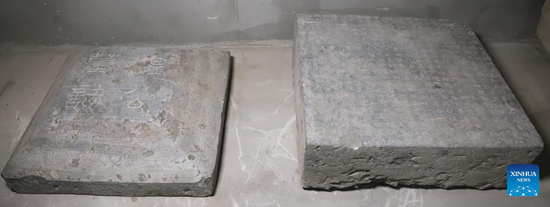
Undated file photo shows an epitaph dating back to the year 757 during the Tang Dynasty (618-907) found in north China's Hebei Province. (The cultural relics protection department of Linxi/Handout via Xinhua)
Archaeologists have found an epitaph dating back to the year 757 during the Tang Dynasty (618-907) in north China's Hebei Province.
The relic, found in a farmer's home, was identified by archaeologists conducting investigations on folk cultural relics in Yanghuangying village of Linxi County.
Measuring 40 cm in both length and width and 15 cm in thickness, the epitaph is made of bluestone, with Chinese zodiac images of human bodies and animal heads engraved around it, according to the cultural relics protection department of Linxi.
It records in detail the life story of the tomb owner, the composition of the deceased's family, as well as the names and official positions of their ancestors.
Wan Wenli, a local history and culture researcher, said the discovery provides supporting historical materials for studying the local official positions of the Tang Dynasty, and also has important historical reference value for understanding the culture and funeral customs of renowned families in the period.


















































 京公网安备 11010202009201号
京公网安备 11010202009201号